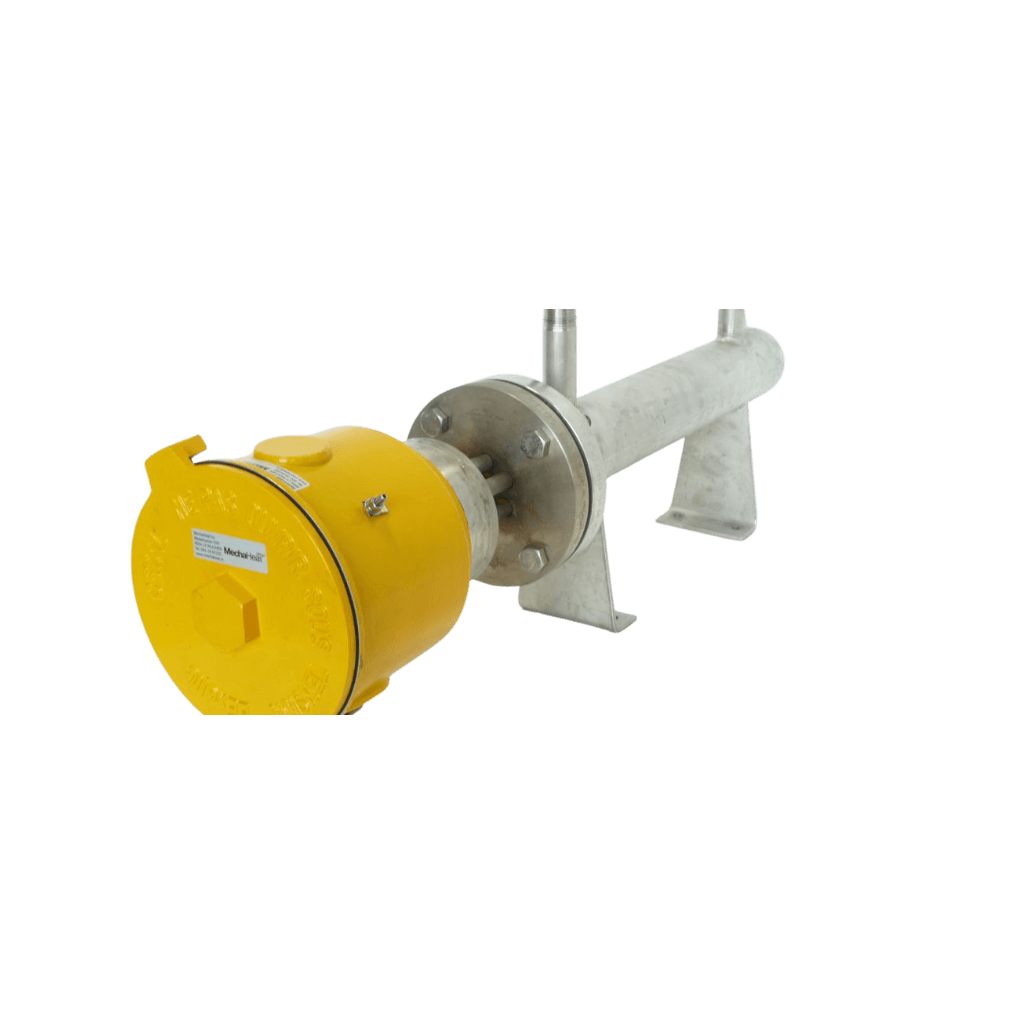
Explosion-proof circulation heaters are designed for the heating of liquids like water, fuel, oil, as well as for the heating of gasses like air, steam, nitrogen, methane hydrogen and so on. This type of heaters is specially designed for industrial application and always comprises of one or more heating elements.
Technical advice
Explosion-proof circulation heaters can be used in hazardous areas. These heaters consist of housing and on the inside, a (flanged) immersion heater is mounted. The vessel is often a tube with an inlet and outlet welded on top, provided with flanges.
Heating Group designs every explosion-proof circulation heater on customer specification. Of course, these heaters are ATEX-certified. In the vessel, a thermostat or temperature controller can be installed as well as a pressure relief valve. Circulation heaters can be produced in numerous lengths and diameters and can be fitted with insulation should the customer require so.
The Explosion-proof circulation heaters are custom made according to a specified pressure and temperature according to the production guidelines of EN, CODAP, ASME, TEMA, STOOMWEZEN. The circulation heaters can be designed for very high-power ratings.
The heaters are inspected by LCIE and are being produced according to the procedure of EN60097-0
Depending on the application of the circulation heaters, the following materials can be used: steel, diverse sorts of stainless steel, Incoloy, Inconel and all other steel types which are available on the market.
When desired or necessary the circulation heater can be insulated.
Explosive atmospheres can develop through flammable gasses, vapour, mist or dust. If there is a multiple of this in the air, mixed with oxygen and an ignition source it can lead to an explosion. Explosions can cause fatal injuries, serious injuries and/ or big material damage. If we eliminate one of these three factors, we can prevent explosions from happening.
Explosion protection can happen in three different ways:
In multiple businesses, the presence of flammable substances cannot be prevented and since in most business environments there are people working, it is not beneficial to remove the oxygen. It is the easiest way to eliminate ignition sources to prevent explosions. That is how Heating Group circulation heaters are designed. The sparks which originate with electric connections are extinguished in the special connection house.
The term ATEX comes from the French ATmosphères EXplosibles, which is used in the European guidelines for explosion safety. Since the first of July 2003, organizations in the European Union should meet the ATEX 153 guideline if they can be explosive. For equipment in explosive rooms, there is a special guideline, the ATEX-114-guideline. You can read everything about ATEX circulation heaters below.
Heating Group International B.V. © 2024
Do you have questions or do you need advice? On our customer service page you can find frequently asked questions and on the contactpage we have provided all information required to contact us.